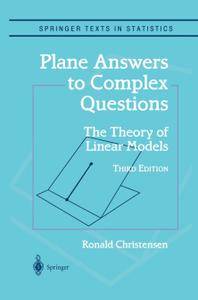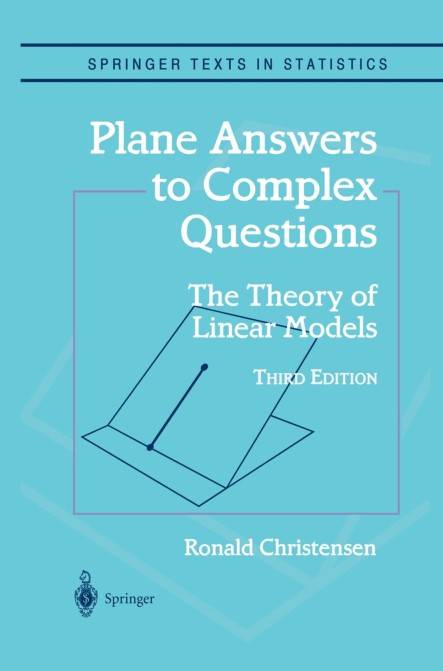Plane Answers to Complex Questions: The Theory of Linear Models, Third Edition by Ronald Christensen
English | PDF | 2002 | 493 Pages | ISBN : 1441929711 | 34.7 MB
The third edition of Plane Answers includes fundamental changes in how some aspects of the theory are handled. Chapter 1 includes a new section that introduces generalized linear models. Primarily, this provides a defini tion so as to allow comments on how aspects of linear model theory extend to generalized linear models. For years I have been unhappy with the concept of estimability. Just because you cannot get a linear unbiased estimate of something does not mean you cannot estimate it.
For example, it is obvious how to estimate the ratio of two contrasts in an ANOVA, just estimate each one and take their ratio. The real issue is that if the model matrix X is not of full rank, the parameters are not identifiable. Section 2.1 now introduces the concept of identifiability and treats estimability as a special case of identifiability. This change also resulted in some minor changes in Section 2.2. In the second edition, Appendix F presented an alternative approach to dealing with linear parametric constraints. In this edition I have used the new approach in Section 3.3. I think that both the new approach and the old approach have virtues, so I have left a fair amount of the old approach intact. Chapter 8 contains a new section with a theoretical discussion of models for factorial treatment structures and the introduction of special models for homologous factors. This is closely related to the changes in Section 3.3.
Without You And Your Support We Can’t Continue
Thanks For Buying Premium From My Links For Support
Thanks For Buying Premium From My Links For Support



